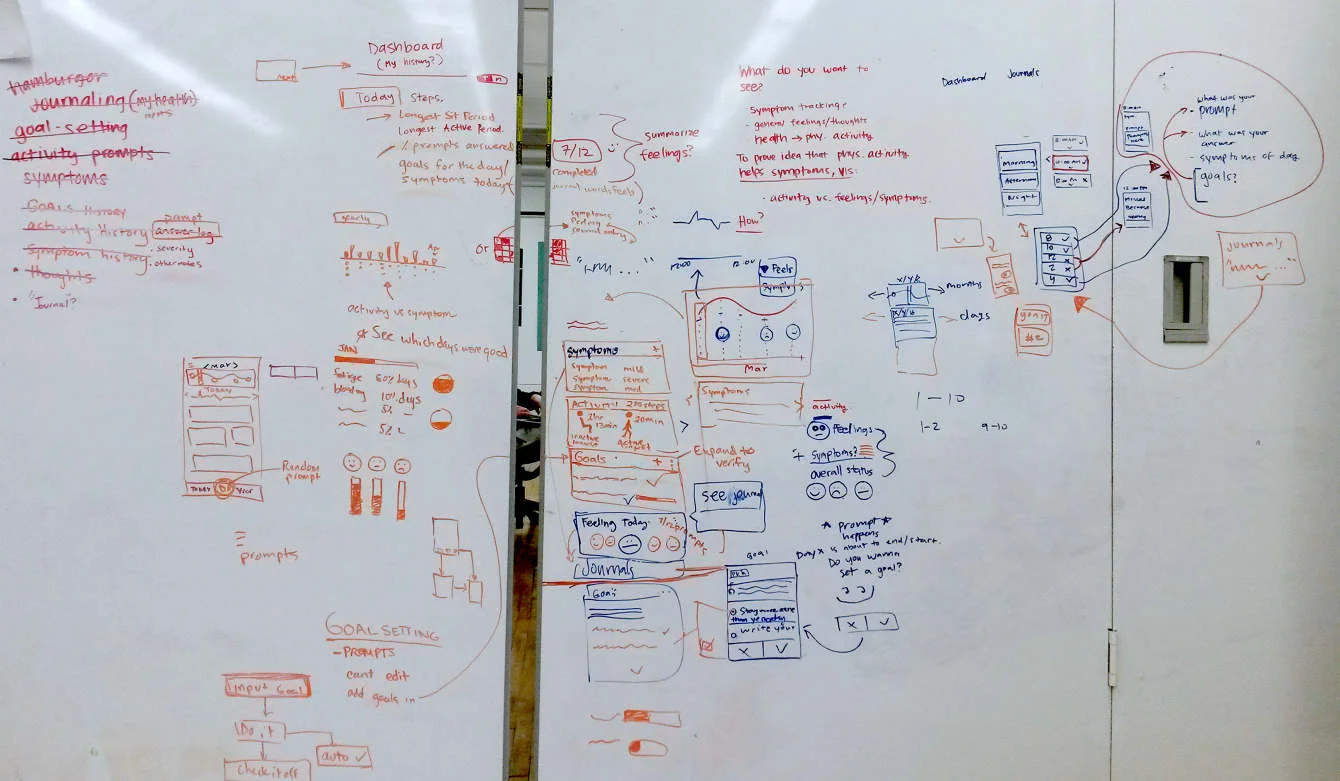Course: Mobile Health
Goal: Create a way for recovering cancer patients to keep track of their recovery and motivate them to be more active to speed up recovery.
UPMC Move is a mobile application designed in collaboration with PhD researchers from the University of Pittsburgh Medical Center, the largest hospital in the Pittsburgh region. Prior to our effort, the researchers were gathering data individually with Fitbit Charge HR devices for each patient/volunteer. Knowing this, my partner and I realized that the need for a single interface that could both aid the recovery of the patient and improve the data-collection of the researchers.
After meeting different patients at various stages of recovery post-surgery, we summarized our findings as follows:
- Lower gastrointestinal cancer most affects the appendix, colon, and rectum – patients must drastically change their diets to accommodate any changes that occurred during their surgery.
- Exercise is difficult during and after cancer treatment and many patients become less active and spend more time sitting or lying down than before.
- More activity may help patients recover faster and have more energy.
Next we did a competitive analysis to look at existing applications related to sedentary inactivity, cancer recovery, or motivation. We found that many of these solutions were not flexible to cover the needs of patients through different stages of recovery.
We started ideating different types of active and passive interventions to test with our client and a small sample of their patients.
With the feedback gathered from the interventions, we developed three potential personas that would cover our users:
- Patients who have never been active but need motivation to start.
- Patients who are self-motivated and want to track milestones in their recovery process.
- Patients who rely on reassurance from their doctors during recovery.
We took note of several reoccurring realities brought up by our clients and the cancer patients afterwards.
With all the data gathered, we went forward with designing an application to motivate patients to get more active and see the correlation between their level of activity and recovery. This ranged from creating an app flow to creating several wireframes and prototypes to test with our client and their pool of volunteer-patients. We conducted usability tests and interviewed our users afterwards based on these criteria:
- Ease of use
- Clarity
- Desirability
- Motivation
- Ability to initiate change in behavior
- Accessibility














At the end of our design study, our client secured a grant to continue their research on the effects of physical activity towards a cancer patient’s recovery. Research and design exercises conducted in this project will continue to be explored for future development. The paper concluding our findings can be viewed here.
Lessons Learned:
- There are always exceptions to what you think your users are comfortable with and knowledgeable about – you can find a grandmother who knows all the ins and outs of her iPhone find a college student who doesn’t know how to set up his email app.






